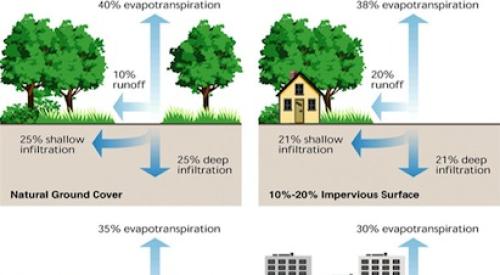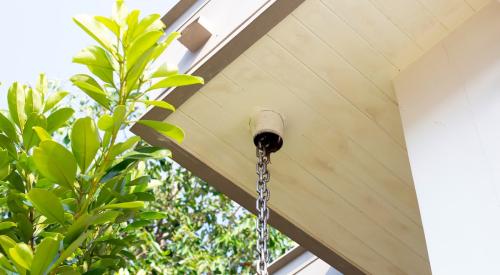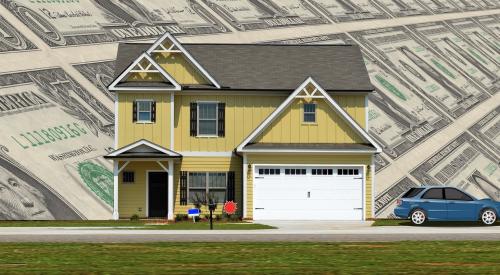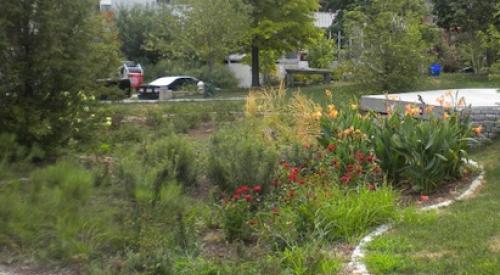The LID approach to land development uses various land-planning and design practices and technologies to conserve and protect natural ecosystems while reducing infrastructure costs. It allows cost-effective land development that helps mitigate environmental impacts.
For example, pollution from storm-water runoff can be a major concern, especially in urban areas. As rainwater washes across streets and sidewalks, it picks up oil, detergents, solvents, de-icing salt, pesticides, fertilizer and pet-waste bacteria. Traditional storm-water drains, instead of channeling water to treatment facilities, carry this toxic runoff into streams, rivers and lakes. LID techniques help reduce such pollution by allowing natural infiltration to occur as close as possible to the original area of rainfall.
The basic LID method for handling runoff reduces the volume of runoff and decentralizes flows through a series of smaller retention/detention areas that allow localized filtration rather than carrying runoff to a remote collection area. Additionally, decreasing the amount of impervious surfaces that prevent natural infiltration can be a simple strategy for reducing storm-water runoff and water-table depletion.
Other common LID strategies include:
- using grass swales and rain gardens to reduce runoff velocity and allow filtration while channeling away high-volume flows.
- reducing road widths to decrease the amount of impervious surfaces.
- using cistern collection systems to store rainwater for irrigation during dry periods rather than channeling it to streams.
- grouping homes to reduce the amount of land/topsoil that needs to be overturned for building the homes or for infrastructure. This also protects trees and preserves open space, which are elements of LID.
- Xeriscaping, or landscaping with native plants, to minimize the need for irrigation systems and enhance property values.
| Grass swales provide a low-cost alternative for conveying water from streets, downspouts and structures. |
A description of LID practices is available online from the PATH Technology Inventory at www.toolbase.org.
Builders and developers can reap significant cost savings by using LID strategies. These strategies can offer infrastructure savings and a cost-effective response to stringent environmental regulations. They also can help municipalities contain burgeoning street and storm-water management costs while encouraging residents' environmental stewardship.
Not all sites can use LID techniques effectively. Soil permeability, slope and water-table characteristics might limit the potential for local infiltration. In urban areas and areas with high levels of contaminants, using LID filtration techniques might be precluded.
Also, many local codes, zoning regulations, parking requirements and street standards were developed before water-quality and storm-water management concerns emerged and thus might be at odds with LID practices, though cost factors might help drive change in this area.
In response to growing interest in LID, the NAHB Research Center, with funding from PATH, authored The Practice of Low Impact Development. The publication provides a brief introduction to LID and discusses conventional and alternative techniques and technologies that developers can integrate into their practices. It is designed to increase developers' and public officials' awareness of LID opportunities and encourage flexibility in local development codes, promote housing affordability and reduce the environmental impacts of land development.
To download the publication from the Internet, go to www.huduser.org/publications/destech/lowimpactdevl.html. To order a hard copy, call HUD User, an information source for housing and community development researchers and policymakers, at 800/245-2691.
Also, the NAHB Research Center has produced Builder's Guide to Low Impact Development and Municipal Guide to Low Impact Development with Environmental Protection Agency funding. Both of these guides can be found at www.toolbase.org or obtained by calling the ToolBase Hotline at 800/898-2842.
Consulting any or all of these publications before initiating the planning process can help building professionals identify and implement LID practices and technologies and thus maximize a project's potential.












